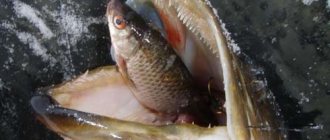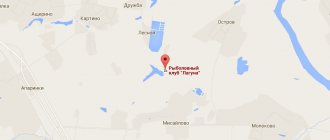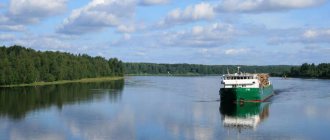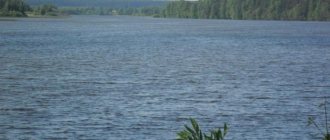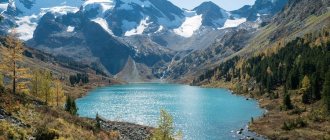Content
- What determines the depth of drilling a well?
- Placement of aquifers
- Determination of drilling depth using resonant-acoustic profiling method
- Where is the best place to drill a water well?
The depth of aquifers in the Moscow region ranges from 10 to 220 meters. Because there are several large limestone horizons in the metropolitan region. The optimal drilling depth is determined depending on the purposes of water intake arrangement. If you need to solve the issue of watering in your garden plot, you can drill a well into the sand; its depth will be within 10-20 meters. At the same time, you need to understand that the quality of the water will be satisfactory, and the productivity of the water carrier is small and unstable. To completely solve the water supply issue, an artesian source of clean drinking water is better suited - a well for limestone
What determines the depth of drilling a well?
The drilling depth is influenced by several factors:
- Depth of the aquifer. This value can be determined, at least approximately, by studying the map of aquifer depths for the regions of the Moscow region. You can find out more accurate footage only after carrying out geodetic work on site or using test drilling. Another affordable way to find out the depth of drilling a well for drinking water is to ask neighbors who have already drilled a well. The water layer lies unevenly, but this indicator can be used as a guide.
- Purpose of the well. For technical water supply to a summer cottage there is no need to reach the lower artesian layers; in this case, a shallow well in the sand will be sufficient. If the goal is to provide households with clean drinking water, an artesian well should be drilled into limestone.
- Performance. One of the key characteristics of any well is its flow rate. This indicator indicates how many cubic meters of clean water a well can produce in 1 hour or one day. Artesian wells are always more productive than sand wells. Water from such sources is much better quality. Flow rate is a variable value, since the productivity of a well is influenced by many factors (seasonality, condition of the source, movement of groundwater, etc.)
- Terrain. The depth of the aquifer is influenced by the features of the relief. It has been proven in practice that on flat areas within one territory the water carrier is higher than on hilly areas.
Natural characteristics and history of the Ruza Reservoir
The reservoir was created during the construction of a dam five hundred and fifty meters long and 25 meters high, through which there is currently a road crossing. The main economic purpose of constructing the dam was to guarantee the supply of fresh water to Moscow residents. At approximately the same time, a fishing industry was organized on the Ruza Reservoir.
The deepest place of the Ruza Reservoir is the channel next to the dam, the depth there reaches 21 meters. Seasonal changes in the water level of the reservoir are quite significant and often reach five meters: the minimum water level is observed before the flood in March, and the highest after the ice melts in May. The bottom of the Ruza reservoir is quite specific; there are many flooded trees and other vegetation.
Map of the depths of the Ruza Reservoir (www.openstreetmap.org)
The Ruza Reservoir is navigable; as a rule, it is covered with ice in late November early December, which melts in late April early May.
In the area of the Ruza Reservoir, the following animals constantly live or come from neighboring territories: ferret, pine marten, chipmunk, muskrat and beaver .
Placement of aquifers
The waters of underground sources are located in different layers of the earth's crust, which differ in their structure and depth. Aquifers are found in loose, granular, or porous rocks that can store moisture. Water accumulates in voids and cracks in solid layers.
Depending on the depth of occurrence, 4 groups of aquifers are distinguished:
- Soil (perched water) is the most accessible aquifer, which is located at a depth of 3-7 meters. The saturation of this water carrier occurs only due to precipitation, so on hot days the water level in such sources decreases noticeably or the water disappears altogether. Such a source of water supply can be used exclusively for technical needs, since the water may be contaminated with chemical and organic impurities.
- Groundwater is another accessible aquifer. It is located at a depth of 7-20 meters, the thickness of the aquifer is about two meters. Such water can be used as drinking water, since it undergoes natural filtration through sand layers, but in any case it is necessary to install additional coarse and fine filters to purify the water from harmful impurities. The groundwater resource is more stable, it is not so dependent on precipitation levels, but during heavy spring melt and heavy autumn rains it increases. During the summer drought, the flow rate drops noticeably.
- Interstratal waters belong to the second aquifer. The layer is located between two layers of waterproof soil and is quite stable. The aquifer is replenished due to deep filtration of groundwater through a multi-meter layer of low-permeability rocks. The interstratal layer is considered a source of drinking water, but an examination must be carried out before use. The depth of this layer is on average 15-30 meters. Sometimes it occurs much higher or deeper.
- The artesian formation is the deepest aquifer, which in the Moscow region lies at a depth of 30-220 meters and is a rich source of clean and healthy drinking water. The artesian aquifer is concentrated in porous or crevice rocks that are located between two impermeable layers (in the metropolitan region this is limestone), which makes the aquifer protected from external factors.
Mozhaisk reservoir. Map of the depths of the Mozhaisk Reservoir
The Mozhaisk reservoir was created in 1959 as a result of blocking the Moscow River with a dam near the village of Marfin Brod, 4 km from Mozhaisk.
By its nature it belongs to river-bed reservoirs. The backwater from the dam extends up the Moscow River for more than 30 km. The width of the reservoir is from one to three kilometers, the area of the water surface is 3400 hectares. The prevailing depths are from 5 to 10 meters, but in the area of the dam they reach 30 meters.
The banks on the right side are high, steep in places, and largely covered with forest. On the left side the banks are flat and open. There are many stuck places in the reservoir bed. In a number of places, the banks are eroded and sheer cliffs are formed with significant depths in front of them. The relief of the bed is mostly flat, the deepest part falls on the bed of the Moscow River.
In the upper part, the reservoir narrows and is overgrown with aquatic vegetation. The water difference between the highest and lowest levels in some years reaches 4 meters. Freeze-up usually occurs in the second half of November, and break-up occurs in mid-April. Due to its elongation and the presence of relatively large reaches, a rather large wave acceleration is sometimes observed in summer.
The ichthyofauna of the reservoir was formed from fish that previously lived in the Moscow River and later settlers who moved in through stocking. In total there are up to 30 species of fish. The main ones are bream, pike perch, pike, roach, silver bream, perch, eel. There are also ruffe, asp, tench, burbot and other species. The pike perch, which was previously almost absent, has acclimatized well in the reservoir. Work was carried out to introduce the eel, which has also taken root well and is currently a popular object of recreational fishing. In 1983, peled larvae were released into the reservoir, but it is still difficult to say how well they will take root. In general, the reservoir has a good food supply.
Since 1960, the Mozhaisk Reservoir has been assigned to the Moscow Society of Hunters and Fishermen (MOOiR). Currently, a cultural fishery for sport and recreational fishing is organized on it.
Over the past years, the society has done a lot of work both to create fishing and sports recreation centers for its members, and to stock the reservoir with fish. The Moscow Society of Hunters and Fishermen has four fishing and sports bases on the Mozhaisk Reservoir, provided for sport and recreational fishing. These bases are:
“Krasnovidovo” is located in a birch grove on a cape jutting into the reservoir, surrounded on three sides by water, one kilometer from the village of Krasnovidovo. The base has a two-story hotel with 80 beds and a boat station for 150 boats.
You can get to the base by rail from the Belorussky railway station to Mozhaisk, then by regular bus in the direction of Chernevo (Sereda) to the Krasnovidovo stop, then 1.5 kilometers on foot. By road through Mozhaisk to Krasnovidovo and to the base.
"Glazovo" is located in the village of Glazovo on the left bank of the reservoir. The base has 12 berths and 30 boats. You can get to the base to Mozhaisk by rail, then by regular bus in the direction of Chernevo (Sereda) to the Glazovo stop, then 0.5 km on foot. By road through Mozhaisk to Glazovo.
Determination of drilling depth using resonant-acoustic profiling method
In the flat areas of the Moscow region it is possible to find water in 100% of cases. If a well needs to be drilled in areas with complex terrain, then first it makes sense to conduct a geological analysis of the area. Resonance acoustic profiling (RAP) is one of the newest and most promising methods of geophysics, which is used to search and determine the depth of aquifers.
The RAP apparatus is based on a highly sensitive acoustic vibration sensor, which makes it possible to determine the nature and condition of aquifers located at a depth of up to 300 meters.
Where is the best place to drill a water well?
The best place to place a well will be an open, flat area on the site, accessible for the entry of special equipment. Even after the well is completed, there is no need to clutter the area around the string, since the well pump will need to be serviced over time. The submersible pump is mounted on a HDPE pipe with a diameter of 32-40 mm and is lowered to a depth of 50, 70 and sometimes more than 100 meters. To remove the well pump for maintenance or replacement, a spacious open area is needed.
If you want to find out where on the site and to what depth to drill a well, contact specialists for a free consultation. We have more than 13 thousand successfully implemented projects across the Moscow region, so we can choose the best option taking into account the geological features of the area and the assigned tasks.
Sights and settlements
There are many villages and villages located on the banks of the Ruza.
The largest settlement is the city of the same name, located at the confluence of the Gorodyanka River. Tourists coming to Ruza must visit Gorodok, or the Ruza Kremlin, a fortress founded by Finno-Ugric and Baltic tribes.
We recommend reading: Mountain and lowland rivers - description, characteristics and features of river systems
Now this archaeological monument, protected by the state, has turned into a popular open-air museum. On its ramparts there is a park. From observation platforms, walkers admire the wonderful landscapes and their reflection in the mirror surface of the river.
Among the greenery rises an architectural monument - the Demetrius Church, erected in 1792. The temple is active.
The ancient estates of noble families, covered in legends, attract the attention of travelers. Most of them are abandoned and are gradually turning into ruins.
The Ruza River has more than once become a significant military frontier. Battles were fought here during Napoleon's invasion and the Great Patriotic War. Now monuments near the villages of Spas Vilki, Chernevo, Ruza, Solodovo, Shulgino, Lenkovo, Rakitino, Palashkino, Komlevo, in the village of Ostashevo and in the city of Ruza remind us of this.
In the middle of the 20th century, a small hydroelectric power station was built near the village of Gorbovo. Its power was enough to provide electricity to nearby collective farms and a pulp mill.
By the beginning of the new century, the need for low power disappeared, and the Gorbovskaya hydroelectric station was mothballed. Local residents now use the dam as a bridge, and the preserved mechanisms and special surroundings attract extreme sports enthusiasts and local historians.
